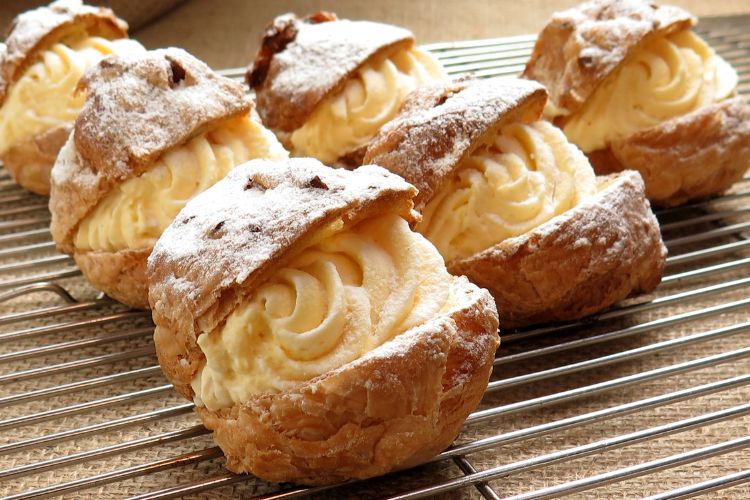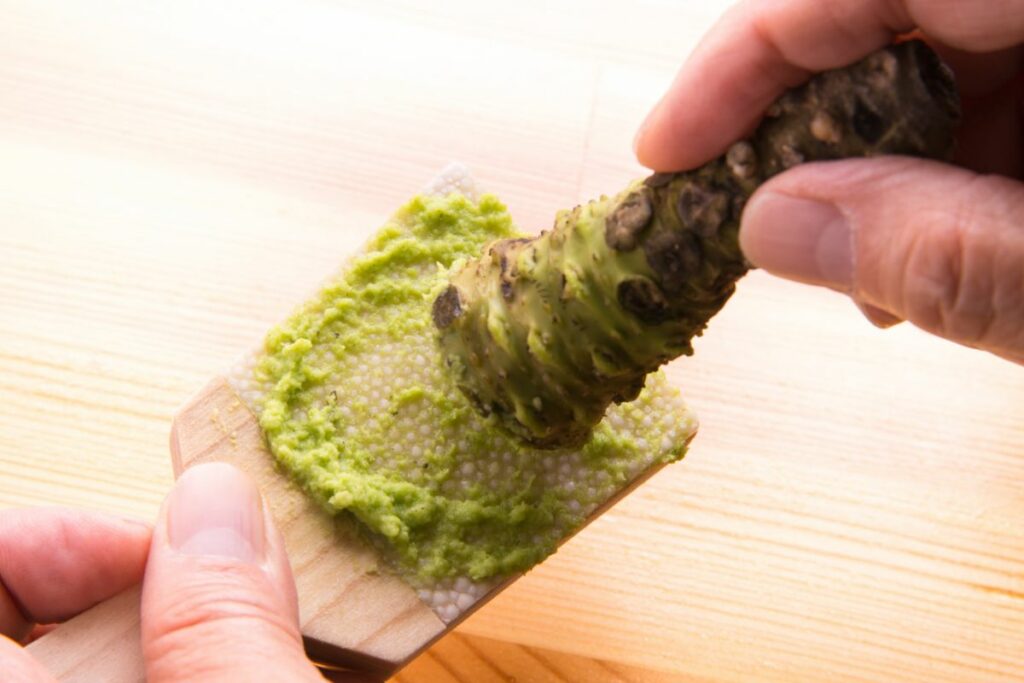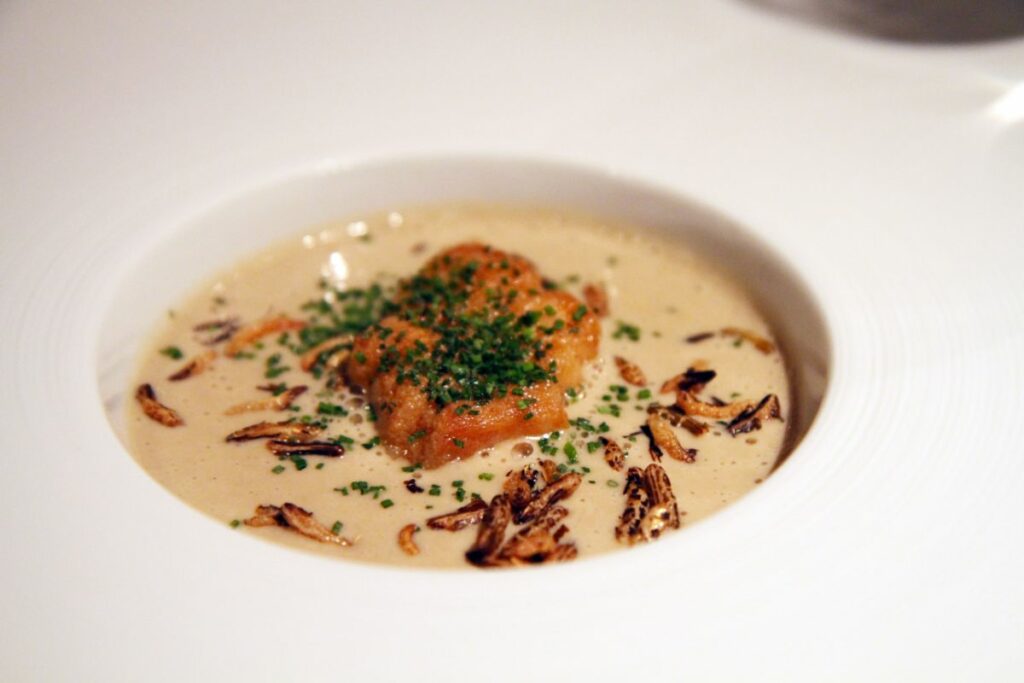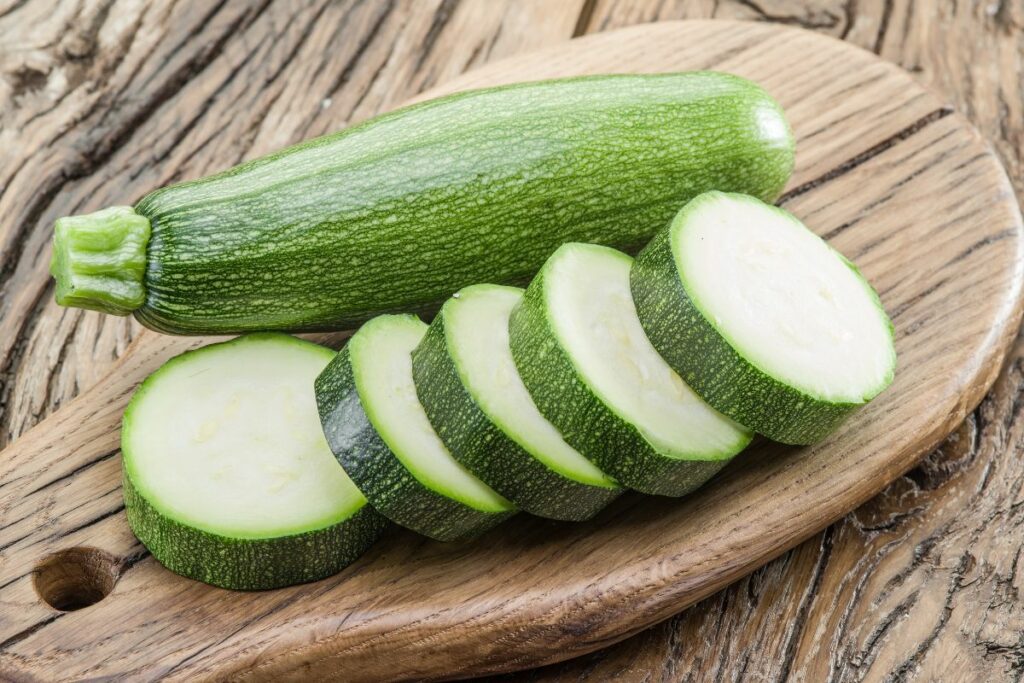A serving of cream or custard can make classic desserts pop, but knowing which one to go for is often a challenge.
Bavarian Cream offers stability, while pastry cream brings a slightly softer texture with a hint of vanilla.
Why are they different? Which one should you use? That’s what we set out to find in our in-depth Bavarian Cream vs. pastry cream comparison.
Bavarian Cream vs. Pastry Cream: Overview
Before we dig deep into the comparison, let’s take a look at an overview of the two creamy fillings:
| Comparison Point | Bavarian Cream | Pastry Cream |
| Main Ingredients | Egg yolks, sugar, gelatin, cold water (for blooming), heavy and cream | Eggs, sugar, cornstarch, and milk |
| Thickening Agent | Gelatin | Starch |
| Served Alone | Yes | Not typically |
| Taste | Richer taste | Mild vanilla |
| Consistency | Stable cream | Firm but silky texture (pipeable consistency) |
What Is Pastry Cream?

Pastry cream (or crème pâtissière) falls under the broad umbrella of custard-based desserts and dishes.
Keep in mind that custard refers to any food preparation that combines milk or cream with egg yolk. It could be a sauce or a cream with a dense texture. Your bowl of custard can be savory, too!
That said, pastry cream is a type of stiff custard made by simmering milk, granulated sugar, yolks, and starch.
Unlike thin pouring variations like creme anglaise, pastry cream uses enough eggs and starch to create a thick consistency that can be piped or spread without losing its shape. This makes it an ideal filling for pastries.
In a way, we can say that crème pâtissière is a pudding-like custard.
What Is Bavarian Cream?
Bavarian cream (crème Bavaroise) is made starting with a crème anglaise base of milk, egg yolks, sugar, and vanilla. However, it also has gelatin and whipping or heavy cream.
When served chilled and topped with fruit or other embellishments, Bavarian cream is an elegant dessert. The gelatin also allows it to be used as a filling in cream cakes and pastries with layers that need structural stability.
Bavarian Cream vs. Pastry Cream: 5 Key Differences
Bavarian and pastry cream recipes share some similarities and are good comfort foods. Yet, there are a few notable differences that impact flavor, smooth texture, and ideal usage.
Let’s take a closer look at how the two creamy desserts compare to each other.
1. Main Ingredients
Crème pâtissière uses a base similar to that of crème anglaise. However, you need to thicken it on the stove with cornstarch. Aside from the starch, whole milk is commonly used for its full body.
Preparing the egg mixture for his type of custard cream can get a little complicated. Some people use whole eggs, while others use yolks only. It’s a matter of preference, but yolks add flavor and a tender consistency that egg whites alone won’t provide.
The classic recipe for Bavarian cream also has a similar crème anglaise base, but you thicken it with gelatin instead of starch. Plus, whipped cream is folded in to lighten it.
2. Flavor and Richness
Pastry cream filling has a mild vanilla flavor. The taste is satisfyingly rich and creamy but not overly sweet.
Bavarian cream tends to have a richer taste thanks to the addition of whipped cream. It still has a delicate vanilla custard flavor, though.
3. Stability and Perfect Texture
Starch thickens pastry cream into a spreadable yet firm texture. It has more body than a pouring custard but isn’t as sturdy as a Bavarian cream.
The powdered gelatin and whipped cream give Bavarian cream a texture that is creamier and more mousse-like than pastry cream.
4. Serving Ideas
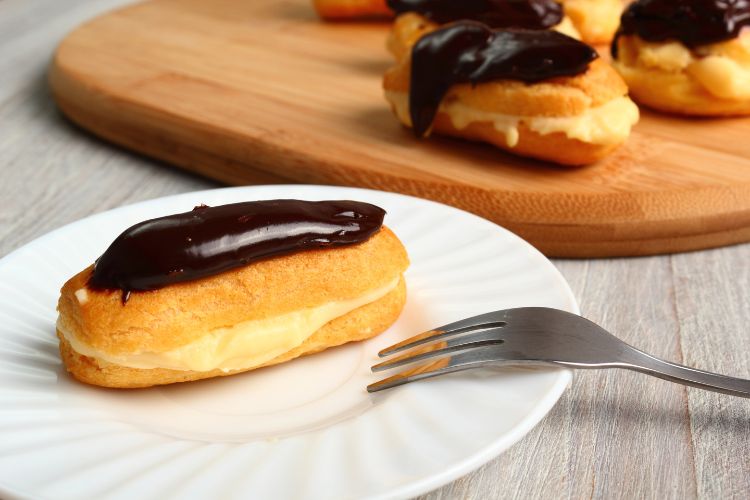
Because it holds its shape well, crème pâtissière is ideal as a pastry filling. It’s suitable for eclairs, fruit custard tarts, cream puffs, and Boston cream pie.
Bavarian cream, on the other hand, can be a stand-alone dessert. Just serve it cold (molded or not) next to fresh fruit slices or drizzle it with fruit sauces. A cup of Americano will help contrast the flavor if you want to put in more effort.
But that’s not all. Bavarian cream is versatile and could be used for layered cakes, too. After all, the gelatin is firm enough to hold nicely as you slice through the cake filling.
Technically, you could use pastry cream for filling cakes. However, its degree of firmness might make it a better fit for filling donuts.
5. Prep Time and Hassle
Pastry cream comes together quickly on the stovetop using pantry staples like milk, eggs, and cornstarch. Of course, care must be taken to break down starch bits, but the whole thing can be done in 10 minutes or so.
While Bavarian cream can still be made at home, it could take longer. Remember that you need to make the anglaise, whip cream, and bloom powder gelatin. You also need to be careful with gelatin. If the heat isn’t optimal, the mix could go lumpy!
Pro Tip: Having a yolk-only custard prepared ahead of time helps speed things up when you’re making the Bavarian cream filling.
5 Similarities Between Bavarian and Pastry Cream
While Bavarian cream and pastry cream are distinct in many ways, they do share some common ground.
Here are a few of the similarities:
- Egg Yolk Mixture: Both creams need egg yolks for their rich, custardy base.
- Sweet Flavor: The hint of vanilla pudding flavor is often present in both cases.
- Versatility: They can be used as fillings for cream donuts and layered desserts.
- Serving Temperature: Both are best served as cold desserts.
- Origin: The desserts are quite old, and some believe that they date back to the 17th or 18th century.
Final Thoughts
The traditional Bavarian cream recipe is perfect for those who appreciate a richer flavor and creamy texture in their layered cakes. It’s also ideal for people who don’t want to prepare another dessert to go along with the cream.
Meanwhile, the crème pâtissière is just perfect for donuts and eclairs.
Whether you opt for the cloud-like Bavarian cream or the creamy custard, make sure you mix the thickener (be it starch or gelatin) well to avoid lumping!

